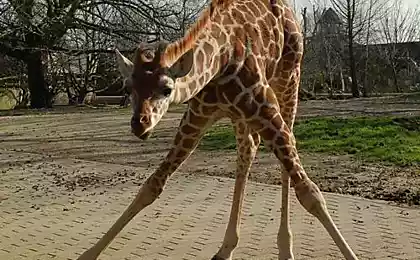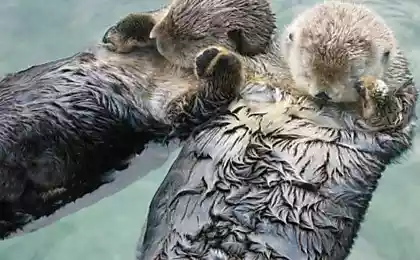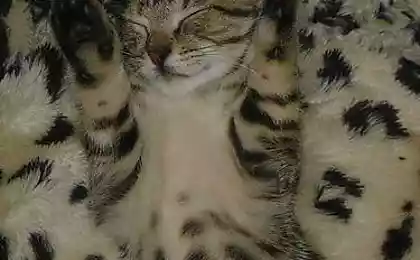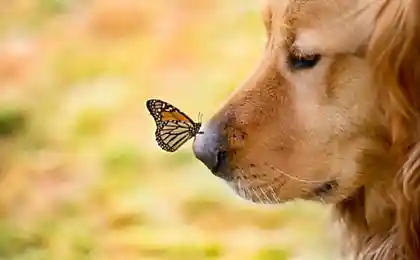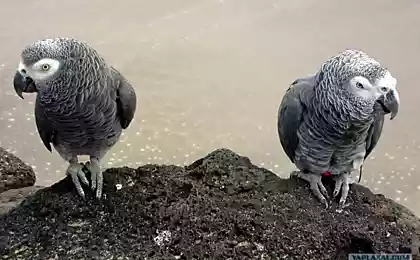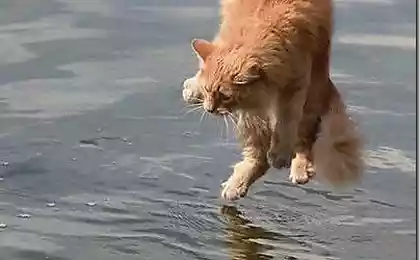812
Begemotosreda
Jus has somehow placed Temko with photos hippos. But after sitting and digging in the internet, I decided that with these lovely creatures can make a good selection. And there on your court ...
11 photos + a few words ...
1.
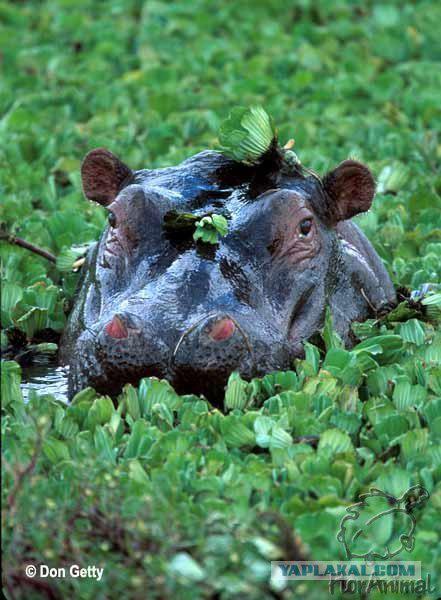
2. Hippo (lat. Hippopotamus amphibius) lived happily ever after at the beginning of the last century. Then hippo could be seen over a large area from the lower reaches of the Nile and ending in Cape Town.
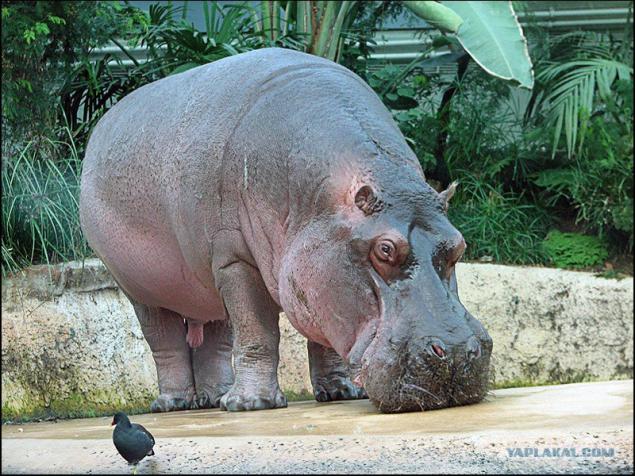
3. Who hippo rarely found in Central and East Africa, and that for the most part in the national parks, where trying to save valuable animal.

4. Hippos live according to a strict schedule. In the daytime they are in the water, on the alert, and at night go look for food and eat. The body of water they come just before dawn. At the same time, each has its own personal hippo "path" - from the reservoir to the coast and a private area on the beach, where he grazes.
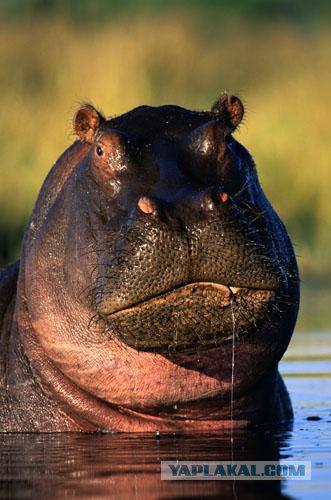
5. An adult hippo weighs about three thousand kilograms and reaches 165 centimeters growth. At the height of the shoulders of a hippopotamus is about 165 centimeters. Hair in this animal is observed only on the face and around the tail.
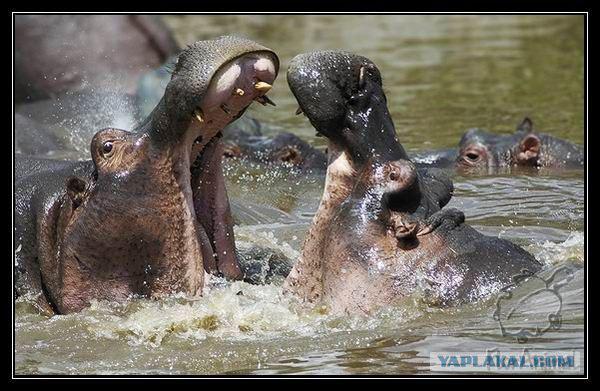
6. The idea hippo skin must be dried from the sun, but this does not happen, because the body of the beast is rich in special glands that cover protects from drying out.

7. Secret glands hippopotamus has a red tint, which sometimes leads to terrible spectacle. When the body overheats, abundantly highlighted red gland, and from the side it seems that behemoth skin dripping bloody sweat.
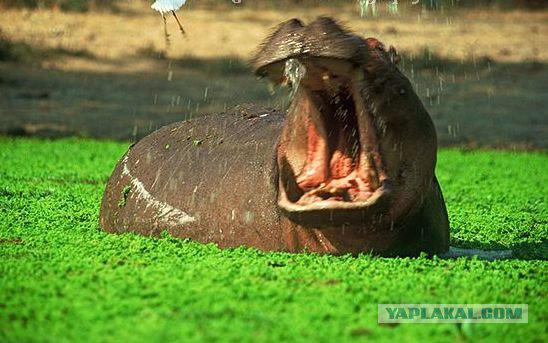
8. large hippo teeth, and quite rare. Interestingly, they do not have roots, but because all life lives hippopotamus teeth - they constantly grow new ones.
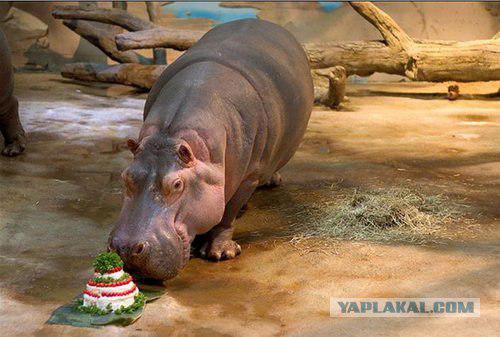
9. Hippos males - the happy owners of a harem. Standard family of hippos - this from a dozen to two dozen females with cubs and head - old male. One mini-company stationed in some places along the coast. There are also single males.
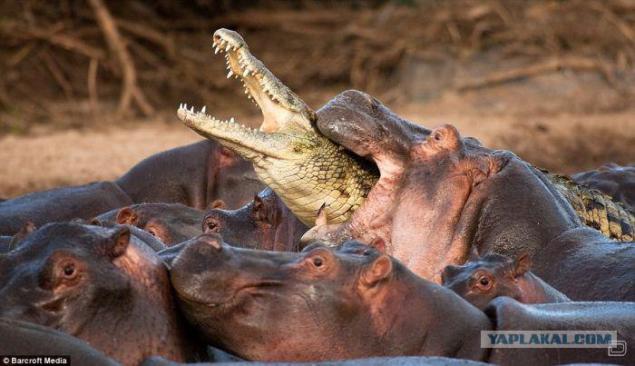
10. Between them are frequent fierce battles for territory. We are very strong hippo canine teeth, which are the main weapon in the fight against the enemy. Males tend to inflict deep wounds, often biting and has Retiro enemy. However, most of the fights end up on the level of threat. The threat is as follows: first hippo peeking out of the water with the menacing open jaws, and then abruptly and loudly beneath the sea, as it strives to go to ram. But underwater hippo describes an arc and goes in the opposite direction.
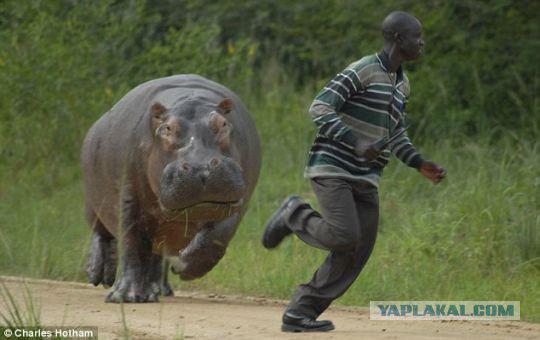
11. behemoth guarding their territory very jealous, and marks it as well as the dog - by using manure. However, the size of the "tags" do not go to any comparison with the dog - they reach one meter in height and two meters - in diameter. Technique "spray" litter is very interesting: a behemoth throws his tail, becoming the butt to the right place. The life of many communities in the vicinity of lakes depends on the number of hippos in the pond. It has been proved that by having a hippo in the water it is actively developing the phytoplankton, which, in turn, increases the biological productivity of all living things. Thus, the greater the hippos in the lake, the more and other animals, including fish, which feed on the locals.
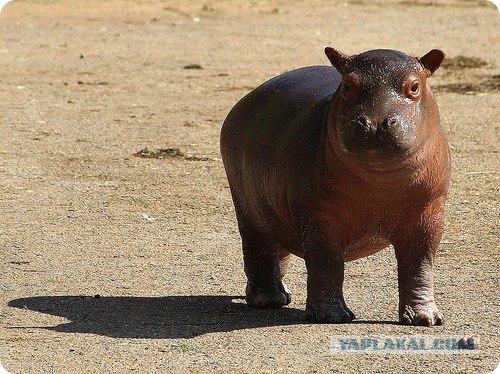
12. And another
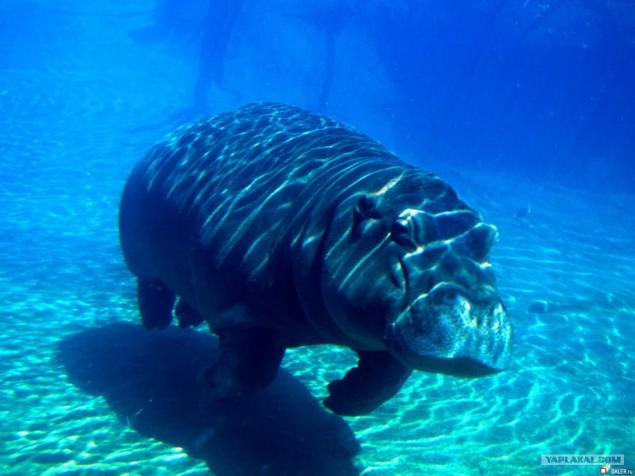
Source:
11 photos + a few words ...
1.

2. Hippo (lat. Hippopotamus amphibius) lived happily ever after at the beginning of the last century. Then hippo could be seen over a large area from the lower reaches of the Nile and ending in Cape Town.

3. Who hippo rarely found in Central and East Africa, and that for the most part in the national parks, where trying to save valuable animal.

4. Hippos live according to a strict schedule. In the daytime they are in the water, on the alert, and at night go look for food and eat. The body of water they come just before dawn. At the same time, each has its own personal hippo "path" - from the reservoir to the coast and a private area on the beach, where he grazes.

5. An adult hippo weighs about three thousand kilograms and reaches 165 centimeters growth. At the height of the shoulders of a hippopotamus is about 165 centimeters. Hair in this animal is observed only on the face and around the tail.

6. The idea hippo skin must be dried from the sun, but this does not happen, because the body of the beast is rich in special glands that cover protects from drying out.

7. Secret glands hippopotamus has a red tint, which sometimes leads to terrible spectacle. When the body overheats, abundantly highlighted red gland, and from the side it seems that behemoth skin dripping bloody sweat.

8. large hippo teeth, and quite rare. Interestingly, they do not have roots, but because all life lives hippopotamus teeth - they constantly grow new ones.

9. Hippos males - the happy owners of a harem. Standard family of hippos - this from a dozen to two dozen females with cubs and head - old male. One mini-company stationed in some places along the coast. There are also single males.

10. Between them are frequent fierce battles for territory. We are very strong hippo canine teeth, which are the main weapon in the fight against the enemy. Males tend to inflict deep wounds, often biting and has Retiro enemy. However, most of the fights end up on the level of threat. The threat is as follows: first hippo peeking out of the water with the menacing open jaws, and then abruptly and loudly beneath the sea, as it strives to go to ram. But underwater hippo describes an arc and goes in the opposite direction.

11. behemoth guarding their territory very jealous, and marks it as well as the dog - by using manure. However, the size of the "tags" do not go to any comparison with the dog - they reach one meter in height and two meters - in diameter. Technique "spray" litter is very interesting: a behemoth throws his tail, becoming the butt to the right place. The life of many communities in the vicinity of lakes depends on the number of hippos in the pond. It has been proved that by having a hippo in the water it is actively developing the phytoplankton, which, in turn, increases the biological productivity of all living things. Thus, the greater the hippos in the lake, the more and other animals, including fish, which feed on the locals.

12. And another

Source:
